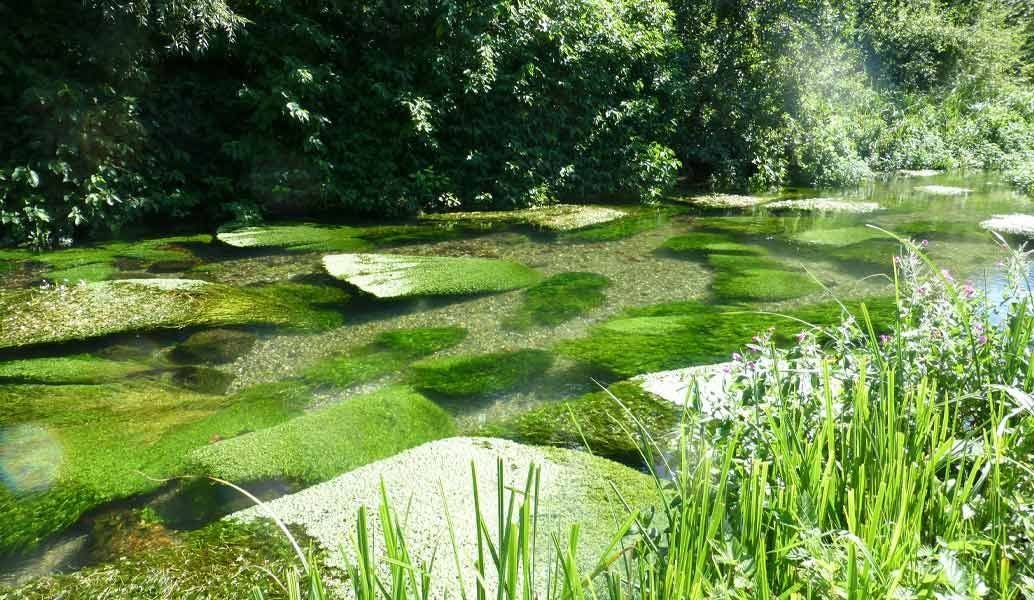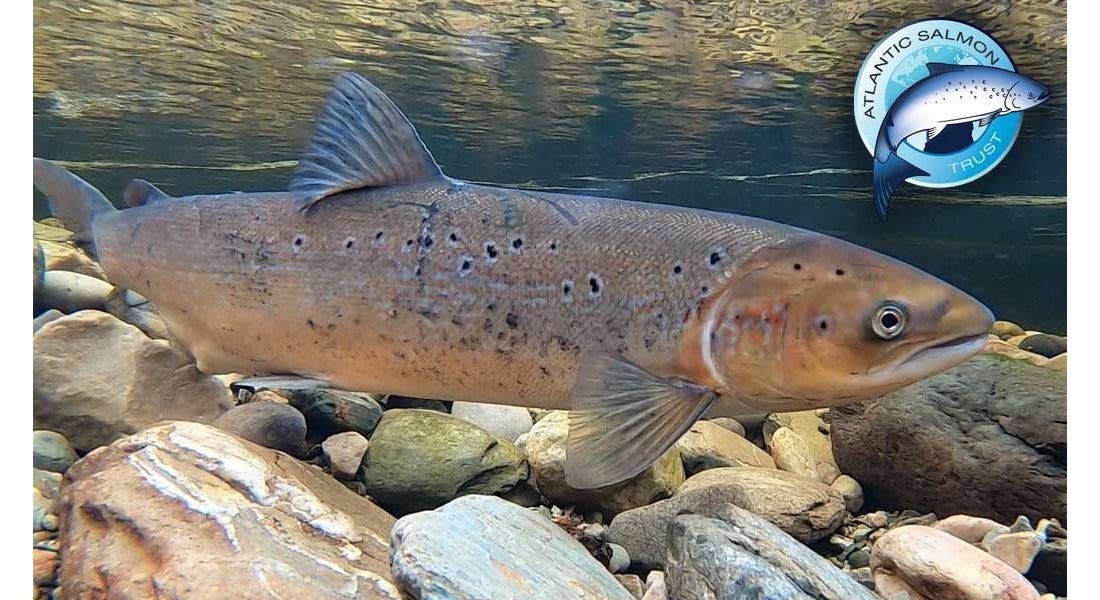Anna Forbes, ARK Senior Project Officer, provides an overview of ARK and introduces you to what has been happening in recent years.
THE EARLY YEARS OF ARK
There are 260 chalk streams in the world and here in England we have 224 of them, including the Kennet and its tributaries.
What makes them special is their cold, clean and clear water, which supports a wealth of native wildlife and sadly some invasive non-native species too!
It was back in 1990 that a group of local people, concerned by the Kennet’s poor health decided to form an action group to bring pressure on bodies, including Thames Water and the Environment Agency. Jack Ainslie, Roger deVere, and friends formed Action for the River Kennet (ARK). Their focus was the abstraction on the Kennet and the impact this was having on the wildlife, including fish.


ABSTRACTION
Abstraction is the extracting of water from the chalk aquifer. The chalk aquifer is the underground layer of water-bearing permeable rock. Chalk streams rely on plenty of winter rain to filter down into the aquifer, which acts like a giant sponge. When the aquifer is saturated the water feeds into the river from the source and natural springs along its path.
The water that comes out of your taps has been abstracted by the water company from the aquifer. So, valuing water is paramount. The less we can all use, the more that can reach our rivers and keep them flowing.
After more than 20 years of campaigning Thames Water has built a pipeline which reduces the quantity of water abstracted from the Axford borehole during times of low flow. Thames Water has also stopped abstracting water from Ogbourne, except in emergencies.
WHAT ARK DO TODAY
Since those early campaigning years ARK has grown to become a registered charity, you can join us by supporting our work through becoming a member for just £20 a year.
We are a small but active conservation charity, dedicated to protecting and improving our chalk streams, working not only on the Kennet but its tributaries too. We are also part of the Rivers Trust movement and we are the host for both the Kennet Catchment Partnership and more recently have additionally taken on the Pang Catchment too. Both the Kennet and the Pang are tributaries to the Thames.
We continue to campaign and lobby for the health of our rivers. We raise awareness of issues such as unsustainable abstraction, sewage pollution, agriculture pollution, plastic pollution and road surface runoff pollution. We recently supported the Kennet Catchment River Keepers peaceful protest demanding an end to sewage pollution.
For many years we’ve been carrying out successful and award-winning practical conservation from small to large scale, increasingly looking at interventions and solutions at a catchment scale. To make bigger impacts today’s thinking is very much at a catchment scale, so you’ll see us not only working in the rivers but by them and sometimes quite far away from them. Our projects include river restoration, habitat improvements, fish passage, wetlands creation, a range of citizen science surveying and monitoring, extensive educational outreach (known as River School) and rain garden builds.
None of this can be done alone, often we are working in partnership or collaborating with landowners, including fisheries, farmers, farmer clusters, councils, communities, businesses, fellow NGOs and others.


VOLUNTEERS
We are lucky to have more than 400 volunteers! Lots have been volunteering with us for many years and have built up their own immense knowledge and skillsets. All our regular volunteer tasks are led by our experienced staff. The days offer the opportunity for outdoor practical work, learning about your local river, what the task is, why we are doing it, how we are going to do it and what this will achieve. ARK provides all the equipment and any necessary training. It’s a great way to see the river from a completely different perspective, see lots of wildlife and do something positive. On many levels our volunteers have fed back how satisfying they find volunteering with us is and for many it has opened up a new passion for rivers, especially chalk streams. Who wouldn’t enjoy their first kingfisher fly by, seeing a shoal of grayling swim past or watching brown trout spawning?
Volunteers often remark how rewarding they find the physical work in and by their local chalk stream and the opportunity to see and volunteer on stretches they may be less familiar with. There is also the social side to our volunteering, a chance to meet like-minded individuals of all ages and backgrounds.


CONSERVATION WORK
We know that well led volunteer tasks can achieve conservation work of an excellent standard. Given clear guidance, training, the right equipment, oversight, and lots of biscuits our volunteers have restored many kilometres of river. This can be through invasive non-native plant removal, litter picking, tree planting or often building wooden structures known as brushwood mattresses and deflectors. These are made from natural materials and in many cases we are able to use local site won materials to restore or enhance a stretch of river.
Planting up the mattresses with plenty of native marginal plants, means their roots and rhizomes grow out into the silt that the mattresses trap. This helps keep the gravels clean for spawning and the roots hold riverbanks together and prevent erosion.
River buffers of established native vegetation help make the river more resilient, helping to filter runoff pollution and join up the riverbank corridor for wildlife. This healthy marginal habitat benefits ground nesting birds, mammals (including water voles), insects such as beautiful and banded demoiselles, pollinating insects such as bees, butterflies and moths and provides important cover for spawning fish.
When mayfly emerge from the riverbed to continue their life cycle into the dun, then spinner stage they will often land of marginal vegetation.




The shape of the brushwood mattresses creates meanders in an otherwise often artificially straightened channel. Meanders put flow diversity back into the river system, this is important because it has a positive impact on biodiversity by creating a mosaic of habitats for a wide range of aquatic and land species.
The deflectors we install are known as Large Wood Debris (LWD). This is when large wood such as big branches or a tree trunk are pinned into the river. Nowadays it is widely recognised that trees in rivers are a good thing. To have truly rich and diverse river habitats we need to resist the urge to pull everything natural that's in the river out and in many cases start to actively put natural features back in or replicate natural processes, like trees falling into rivers.
Trees in the channel instantly creates flow diversity and cover for fish from predators. They also support aquatic invertebrate populations; these are important processors in the river ecosystem, as well as the main food source for many species.
Fish populations are likely to be healthier when there are plenty of places for young fish to disperse and hide and where there’s a healthy population of their favoured food source.




ANGLERS RIVERFLY MONITORING INITIATIVE
Since 2007 we’ve been monitoring invertebrates in the Kennet catchment though a nationally recognised citizen science called the Angler’s Riverfly Monitoring Initiative (ARMI) overseen by The Riverfly Partnership. This initiative set up by anglers is now undertaken by a range of people, still plenty of anglers and all with the same goal of wanting a healthy river.
The riverfly monitoring method is primarily to pick up serious pollution incidents that might otherwise go undetected. We are the accredited Riverfly Hub for the Kennet and Pang catchments with 70 fixed sites being regularly monitored by our trained volunteers. Thislong-term data is useful for us and is shared with the Environment Agency and The Riverfly Partnership.
REWIGGLING OUR RIVERS
Another practical action we undertake is rewiggling rivers, freeing rivers from the constraints of the past where channels have been moved to the edges of fields and are very straight. Restoring rivers to their paleo channels reconnects them to the floodplain and natural processes are restored. We recently carried out a successful project doing exactly this on the Og, a small Kennet tributary upstream of Marlborough.




FISH PASSAGE
Another important aspect of our work is fish passage and in 2021 we trained up a group of our volunteers to carry out a new citizen science developed with ZSL called ObstacEELS! Volunteers walked the riverbanks of the lower and middle Kennet and the Pang identifying and assessing barriers to eel migration. The data was then used to prioritise obstacles and identify if barrier removal or modification are options in the future (permissions and funding permitting).
Fish passage has been significantly increased through our recent Sparkling Streams project, where extensive work was undertaken on the Kennet at Eddington to reconnect a historic channel that fish had not been able to use for more than a hundred years.
WETLANDS
Wetlands are now being recognised as a nature-based solution, that can help improve river health. In 2015 we dug our first wetland at our Stonebridge Wild River Reserve, the objective was to prevent a significant amount of road runoff pollution from the busy A4 flowing straight into the Kennet, which it had being doing for many years. As with all our projects, funding had to be raised, but once secured the wetland was dug and our volunteers planted it up with thousands of native wetland plant species.
The wetland quickly matured, with its various cells and levels allowing sediment to drop out and be filtered and in times of high rainfall the water that eventually reaches the river has been cleaned by all the plants. The wetland not only helps the health of the river it has added biodiversity to the site and is a public amenity.
Since 2015 we’ve dug five more wetlands in the Kennet catchment, they’ve been made possible thank to funders and trail blazing landowners, including parish councils and farmers.


EDUCATION
A core part of ARK’s work is education. Our volunteers take our stand to various events within the catchment to raise awareness and gain new members. We deliver a number of talks and presentations each year to clubs, groups, organisations and businesses. We also run an ongoing project called River School, inspiring and educating children.
Last year we worked with 2,012 children, getting the majority of them outdoors and in their local chalk stream. We believe getting children in their river is the best learning experience, where with our knowledge and passion we can help students enjoy, understand and value the river and its wildlife on their doorstep. The excitement for children, who often have never been in their local river of getting into thigh waders and finding their first bullhead or a cased caddisfly larva really does switch them on to what amazing wildlife actually lives in their chalk stream.
We have strong relationships with fisheries and other riparian owners, which gives us access to fantastic stretches of river to run a significant number of our River School workshops; including some on the Osier Bed Stream as it flows through the Sportfish Game Fishing Centre - a fly fishing hot spot.


ARK is a membership organisation and you can find details on our website to join and support us www.riverkennet.org
To volunteer email anna@riverkennet.org - you can also follow us on social media channels too.





